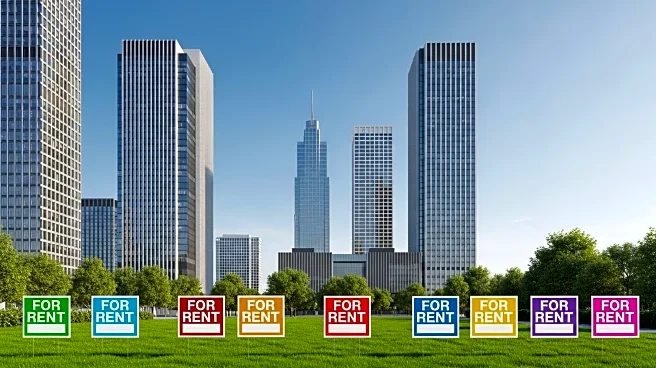What's Happening?
A recent analysis by Zillow has identified several U.S. metropolitan areas where a significant portion of apartments are renting for less than $1,000. Wichita, Kansas, leads the list with 54% of its apartment listings priced under $1,000, followed by McAllen, Texas, with 50.6%. Other cities with notable shares of affordable rentals include Little Rock, Arkansas (49%), Toledo, Ohio (46%), and Oklahoma City, Oklahoma (42%). The study highlights the Midwest and South as regions with more affordable housing options. Despite the national average rent reaching $2,023, these areas offer opportunities for renters to save money and potentially fast-track their journey towards homeownership.
Why It's Important?
The findings from Zillow's analysis are significant as they highlight areas where renters can find more affordable housing options amidst rising national rent averages. This is particularly important for individuals and families looking to save for homeownership, as lower rent costs can facilitate savings for a down payment. The concentration of affordable rentals in the Midwest and South suggests regional disparities in housing costs, which could influence migration patterns and economic opportunities. Additionally, the study underscores the challenges faced by renters in high-cost areas like Boston, Miami, and Washington, D.C., where affordable rentals are scarce.
What's Next?
As housing affordability continues to be a pressing issue, policymakers and urban planners may need to consider strategies to increase affordable housing stock in high-demand areas. This could involve zoning changes, incentives for developers, or investment in public housing projects. Renters in more expensive cities may seek relocation to more affordable regions, potentially impacting local economies and demographics. The ongoing discussion around nationwide rent control and housing policy reform may gain momentum as stakeholders address the affordability crisis.
Beyond the Headlines
The disparity in rental affordability across U.S. cities raises questions about economic inequality and access to housing. Regions with higher shares of affordable rentals may attract a diverse workforce, contributing to economic growth and stability. Conversely, areas with limited affordable options may face challenges in retaining talent and supporting low-income residents. The analysis also highlights the need for comprehensive housing policies that address both affordability and accessibility, ensuring equitable opportunities for all citizens.












